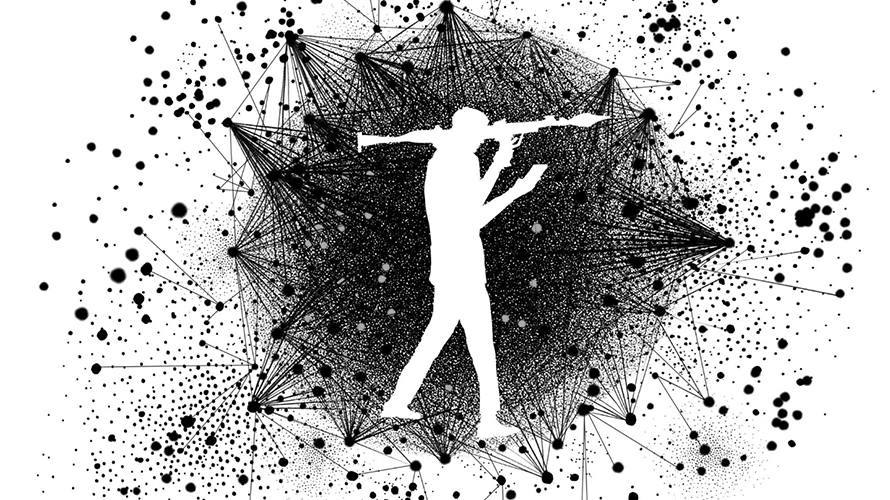
Watching the Christchurch gunman Brenton Tarrant’s (28) headband camera’s online streaming video, 90’s kids would not find anything they have not seen before. If you’ve ever played a first-person shooter game such as Call of Duty or Battlefield, you will understand how much the 28-year-old Australian sociopath was affected by the time he spent shooting ‘enemies’ online.
New Zealand is going through the deadliest attack in its history. Their prime minister, Jacinda Ardern described the killings as ‘the darkest days’ in their near history. She also became the first politician to call a white man, a terrorist.
Attacks on the 15th of March is very much similar to the alt-right extremist Anders Breivik’s lone wolf attack in Norway in 2011. Gunman Tarrant’s 74-page manifesto titled “The Great Replacement”, which he posted on Facebook, proves that the Norway attack has ‘truly’ inspired the gunman. His Twitter account included pictures of his gun covered with the names of others who had committed similar acts. He paid tribute to everyone who supported him to curate this attack.
Besides Twitter and Facebook, he also utilized other fringy websites to arrange and conduct this atrocity. New Zealand’s police commissioner Mike Bush said he used a “little known online chat platform 8chan to connect to alt-right movements in other parts of the world.”
Only six days after the incident, Mrs. Ardern announced that New Zealand would ban all military-style, semi-automatic weapons. Mrs. Arden’s fast reaction is what America’s pro-gun control politicians have been campaigning for since the Sandy Hook incident in 2012.
However, this attack also calls into question the rise of “alt-tech” platforms, which were as significant as the easy purchase of guns in the execution.
Alt-tech platforms claim to be committed to uncensored free-speech, but they mostly contain ultra-violent videos and remarks filled with hate. These sites build on offensive content, connect like-minded extremists and provide an unregulated platform to exchange ideas on violent acts. They call themselves the “Free Speech Tech Alliance.”
Alt-tech has replacements for the big four. Gab, an alt-right alternative for Facebook, has 240,000 users. Launched just before the 2016 elections by the Silicon-Valley based Trump supporter Andrew Torba, Gab received $1 million through crowdfunding in August 2017. According to Slate Website, Google removed Gab from its app store the week after the Nazis and white supremacists marched through Charlottesville, Virginia, which was two days after Gab’s first anniversary. Mr. Torba announced that the world of internet deserved better than “entirely left-leaning social monopoly” and argued that “deciding what’s news and what’s trending is harassment on the internet.”
PewTube, an alt-tech alternative for YouTube, was launched in the first quarter of 2017. Its owner Anthony Mayfield says Youtube, Google, Twitter, and Facebook are all “monolithic” and governed by “Silicon Valley elitists”. Even though PewTube still has a limited content of around 600.000 videos, it includes videos that “glorify mass murderer Dylann Roof, those that equate black protesters with primates from ‘Planet of the Apes’ and one that puts Holocaust atrocities to the tune of Simon and Garfunkel’s ‘Sound of Silence’.”
Another example is Metapedia, which is an alt-right friendly version of Wikipedia. There’s even a replacement for Tinder, called Wasp.love, which has the tagline “Preserve your heritage! Be fruitful and multiply! Join WASP.love today!”.
Daily Stormer mainly publishes opinion pieces and is the organizing hub of white-supremacist events. Major domain hosting companies such as GoDaddy and Namechamp have decided to refuse service to Daily Stormer.
Alt-tech companies argue that they broadcast a type of political speech that should not be censored. However, what they’re actually doing is making violent individuals connect and nod to each other’s subversive plans. Click-driven commercial internet is allowing these websites to gain traction and motivating the most isolated and dangerous youth to pick up guns. Alt-tech platforms are creating a safe haven for the extremists that the rest of us want to feel safe from.
Norwegian journalist Asne Seierstand, who wrote a book on Anders Breivik named ‘One of Us’ says that on alt-tech platforms “going Breivik” means a full commitment to protecting the Aryan race. In her New York Times opinion piece ‘Unmasking the Roots of White Terror’, Ms. Seierstand states that “Breivik is a man who moved in with his mother in his late 20s. He is isolated and angry, but with newfound friends on the dark web, he decided how he would be seen, heard, recognized and feared. He plotted his attach with an audience in mind.”
Going through the same path as Breivik of publishing manifestos and showcasing killings online, Tarrant also had a target audience in mind. Alt-tech platforms helped him find, connect and show off to his attack’s audience. He probably felt like he belonged somewhere and his existence was important to other people besides his mom. It helped him find ‘enough’ social support to believe that his attack will change the course of his country’s politics. Funny thing is that the prime minister of his country is not even pronouncing his name in order not to give him any publicity that he desperately craves. Nevertheless, his name has a martyr in front of the alt-tech websites.
Christchurch attack once again showed the infinite echo-chambers the internet is creating. For nearly two decades, the focus of counterterrorism has been on militant Islamism. During this time far-right of all sorts have grouped on chat rooms, social media and broader internet in which false narratives are presented as objective reality. We should start thinking about the alt-tech, where its money is coming from and how to get isolated and angry kinds, offline.

